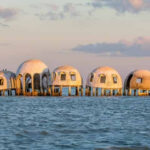The Navajo Nation, a land of rich history and vibrant culture, often evokes curiosity about its location and governance. Far from being just a desolate section of the Southwest as it might have appeared in the past, the Navajo Nation has evolved into a significant and sovereign entity. This transformation was significantly influenced by the discovery of oil in the early 1920s, which spurred the development of a more structured form of government to manage resources and external relations.
The need to engage with American oil companies seeking leases for exploration on Navajoland led to the establishment of a tribal government in 1923. This marked the beginning of what has become the largest and most sophisticated form of American Indian government. At the heart of this governance lies the Navajo Nation Council Chambers, a place where 88 council delegates, representing 110 Navajo Nation chapters or communities, convene to shape the future of their people.
To truly understand where the Navajo Nation is, it’s essential to know it is not just a place on a map, but a self-governed nation within the United States. The Navajo Nation is primarily located within the states of Arizona, New Mexico, and Utah, encompassing a vast territory across the Colorado Plateau. Window Rock, Arizona, serves as the capital of the Navajo Nation and the seat of its government.
Witnessing the Navajo Nation government in action offers a unique insight into contemporary Native American governance. The 88 Council delegates meet to deliberate on critical issues, enact laws, and guide the trajectory of the Navajo people. Reorganized in 1991 into a three-branch system mirroring the U.S. federal system – executive, legislative, and judicial – the Navajo government operates with a level of sophistication widely recognized as exemplary among tribal governments.
During Council sessions, visitors are often immersed in the tradition of delegates speaking in Navajo, a powerful demonstration of the Nation’s commitment to preserving its cultural heritage while navigating modern progress. When the Council is not in session, the essential legislative work continues through 12 standing committees. The Council Chambers itself is a site of cultural significance, with its circular design and walls adorned with colorful murals illustrating Navajo history and the traditional Navajo way of life.
For those interested in learning more or planning a visit, the Navajo Nation Council Chambers offers tours. For further details, you can contact them at 928-871-6417 or write to P.O. Box 1400, Window Rock, AZ 86515. Exploring the Navajo Nation provides not only an answer to “Where Is The Navajo Nation?”, but also an understanding of its dynamic government and enduring cultural spirit.


